
Is it necessary to set the ‘correct’ WB? What happens if we set a wrong WB for the scene we are photographing? Let’s try and answer these questions.
Let us say that you are photographing a person who is wearing white clothes and you are photographing the subject under yellow coloured light. Will his white clothes remain white? No. His white clothes will appear yellowish (unless you have adjusted the WB). We say that the subject has a ‘yellow colour cast’.
Similarly, as an experiment, you light up one side of a subject’s face with blue light and the other side of the face, with red coloured light. The face will exhibit one side as blue and the other as red. These experiments tell us that whatever is the colour of the source of light, will be the colour in the photo. If you photograph the Taj Mahal in the late evening hours, the white Taj Mahal will appear yellowish. So the question is, do you want to show what your eyes saw when you took the photo (yellowish Taj), or do you want to show the actual (white) colour of the Taj? If you prefer the later (original colour), then you would have to remove the yellow from the Taj. This is exactly what White Balance does.
So we can sum it up this way: White Balance is the correction applied to make a scene appear to have been shot in neutral coloured light even though the original scene was shot in coloured light.
Digital cameras offer a choice of various WB settings: Auto, Daylight, Cloudy, Shade, Incandescent, Fluorescent, Flash, and Choose Colour Temperature (the naming can vary with different camera manufacturers).
So far so good.
This story is from the {{IssueName}} edition of {{MagazineName}}.
Start your 7-day Magzter GOLD free trial to access thousands of curated premium stories, and 9,000+ magazines and newspapers.
Already a subscriber ? Sign In
This story is from the {{IssueName}} edition of {{MagazineName}}.
Start your 7-day Magzter GOLD free trial to access thousands of curated premium stories, and 9,000+ magazines and newspapers.
Already a subscriber? Sign In
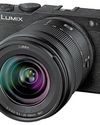
SELECTING THE RIGHT SYSTEM
Buying a new mirrorless camera can be a daunting decision. Not only are cameras very expensive, but also choosing a brand with an exclusive mount can mean locking yourself into a system.
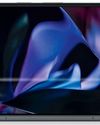
Capturing Momenta Folding Boundaries
With the Pixel 9 Pro Fold, Google takes cues from its impressive line-up of Pixel smartphones and resolves some of the design oddities we’ve seen on foldable smartphones from more seasoned competitors in the category.
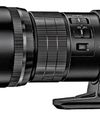
Super Sharp
Smart Photography reviewed the OM System OM 1 Mark II camera last month. If you haven’t read the review, please do so.

HIDDEN FEATURES OF YOUR CAMERA
Ashok Kandimalla has been in the photographic field for over three decades and has extensive experience in both film and digital photography.

Hahnemühle Hemp Paper at Olympics & Paralympics 2024
As the 2024 Paris Olympics and Paralympics embraced sustainability, Hahnemühle’s Digital FineArt Hemp paper played a central role as the exclusive medium for the official Premium Posters. This eco-friendly, plant-based paper aligned with the Games’ commitment to sustainability and delivered exceptional print quality. From limited-edition posters to the Artistic Posters Programme, Hahnemühle’s innovative use of hemp fibres showcased how high-value print products continue to thrive in a rapidly digitizing world.

The Lasting Power of Print: Preserving Memories Through Photobooks
I am a software engineer turned photographer, and my journey in photography has been a constant companion throughout my life.

The Wildlife of Eastern Mongolian Steppe
Mohit Ghatak is an engineer and a management postgraduate and works as a regional business leader in Singapore.

Abhishek Dey's Photo World
I identify myself more as a travel photographer than a purely landscape photographer.
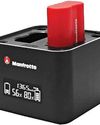
Manfrotto lithium ion batteries for cameras
Manfrotto has introduced its new MKII lithium-ion batteries, featuring a higher capacity of 2400mAh for Nikon, Sony, Canon, Fuji, and OM System cameras.
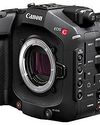
Canon to have EOS C80 with enhanced features
Canon announced the launch of its latest Cinema EOS camera, the EOS C80, just ahead of the International Broadcasting Convention (IBC) 2024.